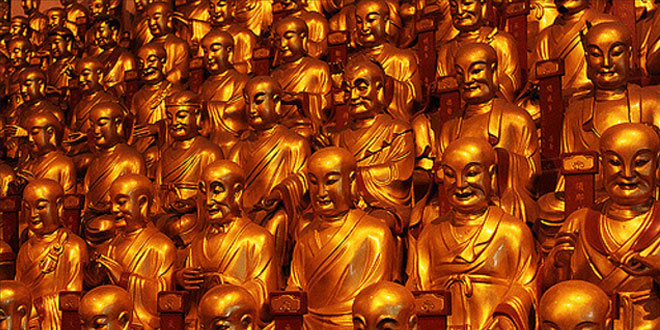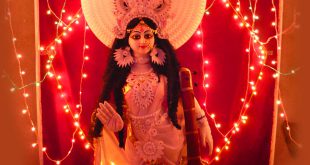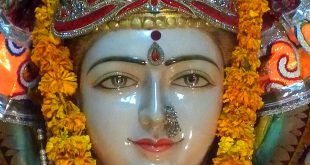The Basic Teachings of Buddha which are core of Buddhism are:
- The Three Universal Truth
- The Four Noble Truth
- The Noble Eightfold Path
In Buddhism, the law of karma, says “for every event that occurs, there will follow another event whose existence was caused by the first, and this second event will be pleasant or unpleasant according as its cause was skillful or unskillful.” Therefore, the law of Karma teaches that responsibility for unskillful actions is born by the person who commits them.
After his enlightenment, he went to the Deer Park near the holy city of Benares and shared his new understanding with five holy men. They understood immediately and became his disciples. This marked the beginning of the Buddhist community. For the next forty-five years, the Buddha and his disciples went from place to place in India spreading the Dharma, his teachings. Their compassion knew no bounds, they helped everyone along the way, beggars, kings and slave girls. At night, they would sleep where they were; when hungry they would ask for a little food.
Whenever the Buddha went, he won the hearts of the people because he dealt with their true feelings. He advised them not to accept his words on blind faith, but to decide for themselves whether his teachings are right or wrong, then follow them. He encouraged everyone to have compassion for each other and develop their own virtue, “You should do your own work, for I can teach only the way.”
Once the Buddha and Ananda visited a monastery where a monk was suffering from a contagious disease. The poor man lay in a mess with no one looking after him. The Buddha himself washed the sick monk and placed him on a new bed. Afterwards, he admonished the other monks. “Monks, you have neither mother nor father to look after you. If you do not look after each other, who will look after you? Whoever serves the sick and suffering, serves me.”
BASIC TEACHINGS OF BUDDHA
The Three Universal Truth
- Nothing is lost in the universe
- Everything Changes
- Law of Cause and Effect
The Four Noble Truths
- Life is suffering;
- Suffering is due to attachment;
- Attachment can be overcome;
- There is a path for accomplishing this.
The Noble Eightfold Path
- Right View is the true understanding of the four noble truths.
- Right Aspiration is the true desire to free oneself from attachment, ignorance, and hatefulness. These two are referred to as Praja, or wisdom.
- Right Speech involves abstaining from lying, gossiping, or hurtful talk.
- Right Action involves abstaining from hurtful behaviors, such as killing, stealing, and careless sex.
- Right Livelihood means making your living in such a way as to avoid dishonesty and hurting others, including animals. These three are refer to as Shila, or morality.
- Right Effort is a matter of exerting oneself in regards to the content of one’s mind: Bad qualities should be abandoned and prevented from arising again; Good qualities should be enacted and nurtured.
- Right Mindfulness is the focusing of one’s attention on one’s body, feelings, thoughts, and consciousness in such a way as to overcome craving, hatred, and ignorance.
- Right Concentration is meditating in such a way as to progressively realize a true understanding of imperfection, impermanence, and non-separateness.
The last three are known as Samadhi or Meditation.
However, there are many sects of Buddhism and there are different kinds of Buddhist monks all over the world. The life and customs of Buddhist monks are not only different and unique but consists of a spiritual meaning and their daily life follows a strict schedule that revolves around meditation, study of scriptures, and taking apart in the ceremonies. There are Buddhist shrines, Buddhist monasteries, where monks live, Gompas and Buddhist Stupas all over the world. However, Tibet is perhaps the only Buddhist country which has Dalai Lama, the Buddhist monk and a spiritual leader, as its political leader too. All monks have special uniform called robes, the color of which can tell you about his status in the monastery such as the brownish orange robe is the color of wise, elderly monks.
Though originated in northern India, Emperor Ashoka helped to spread Buddhism into South East Asian counties such as Sri Lanka, Burma, Thailand and Indo-China, from where it moved on to influence people in the Himalayan kingdoms of Sikkim, Bhutan, Nepal, Tibet, Mongolia, Central Asia along with China, Korea, Vietnam and Japan. Today, Thailand has 95% of Buddhist population, the highest in the world with Cambodia, Burma, Bhutan, Sri Lanka, Tibet, Laos, Vietnam, Japan, Macau and Taiwan following soon behind.
Devotees reaffirm their faith in the five principles called Panchsheel:
- Do not to take life
- Do not to steal
- Do not to lie
- Do not to consume liquor or other intoxicants
- Do not to commit adultery
 Kids Portal For Parents India Kids Network
Kids Portal For Parents India Kids Network







